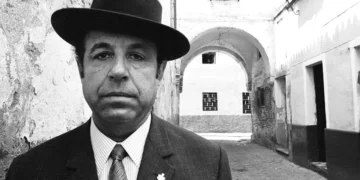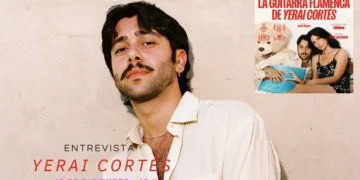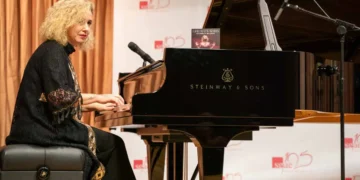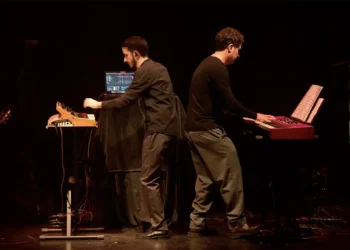|
World premiere. Friday, January 11th, 9:00pm.
Teatro Villamarta, Jerez |
|
Text: Estela Zatania ENCHILADAS AND PAELLA Dance: Amador Rojas, Antonio “El Choro”, Ana Morales, Eduardo Guerrero, María Moreno, Christian Lozano, Encarnación López. Actor: Alejandro Peña. Musicians: Eugenio Iglesias, Paco Iglesias, Agustin Diassera, Ángel Morillas, Alejandro Cruz. Cante: Roberto Chamorro “El Roto”, Inma “La Carbonera”. Lyrical singer: Lalah Domínguez. Script: Pepa Caballero. Arrangements: Fidel Cordero, Jesús Bola, Agutín Diassera. Artistic director: Rafael Estevez. The dark personality and painful existence of Mexican painter Frida Kahlo, a cult figure symbolic of the modern independent woman, is the focus of this biographic work whose world premiere took place coinciding with the centennial of the artist’s birth in 1907. It’s an intriguing idea, beginning with the ingenious play on words contained in the title, “Kahl Caló”, or gypsy Kahlo, which would seem to indicate some kind of link to flamenco. And daring to represent a lame woman, not only through dance, but in the person of a man, is a high-risk undertaking to say the least. Amador Rojas resolves this complicated part with the greatest of skill; since Pastora Galván left us exhausted as “La Francesa”, we haven’t seen such a brilliant personal triumph. With his splendid interpretation and excellent dancing, Rojas can build a career on this work alone. Very impressive. Also noteworthy is the choreography of Rafael Estévez with his customary references to Israel Galván, particularly in hand and shoulder movements. As it stands today, he is the dancer who has best known how to translate the Galván aesthetic to practical use.
This is a very graphic work, relatively easy to follow even without consulting the program notes that outline thirteen scenes, accompanied by the monologues of actor Alejandro Peña who explains complex details, occasionally citing the painter’s words. As theater goes, this is not only admirable original work, but entertaining as well, despite the nearly two hours it lasts, and an intermission that brutally interrupts the magic. A lovely audiovisual segment gives life to Kahlo’s painting “The Broken Column”, in which Rojas on film accompanies the live dancing of the group. Absolutely original, admirable, entertaining… Visually, there is little light or color, the things that most characterize Mexico, and which would have served as a contrast to the tormented personality of Frida. But more than that, what I missed most was flamenco. Above all else, “Kahlo Caló” is a musical that uses elements of dance…among which are some elements of flamenco dance. This is not an attempt to force my interpretation on readers, but rather a cold and impartial reading of the facts. Mexican rancheras, rumbas, Hispanic ballads, “La Sandunga”, “I’ll Never be the Same”, “La Llorona”, etc., build the ambience so effectively that the short snippets of alegrías, fandangos, bulerías, siguiriyas or farruca break the mood and seem destined to justify the clever title of the work, not to mention the financial backing of the Andalusian Agency for the Development of Flamenco. We all know flamenco is excessively politicized these days, and as if it were a monster from a cheap sci-fi film, we’re helpless to stop, redefine or even slow down a process that continues to grow exponentially. The administration carries out its appointed job efficiently, blindly and implacably, without applying criteria of its own, to fulfill the will of voters who had the best of intentions; to protect, support and defend flamenco in all of its manifestations. But what sounds like a noble program to help struggling artists or low-budget works that may have a hard time on the free market, translates into big bucks for shows, one more extravagant than the next, more contrived and costly, of high quality in the execution but with scant flamenco content. It’s understandable in part. We can’t very well pass out Euros to any unemployed person who claims to be a “flamenco artist”. Nothing easier therefore to bet on a sure thing and back these obviously classy works that can’t help but be well-received anywhere, and with any audience. |



 “Kahlo caló”
“Kahlo caló”




















